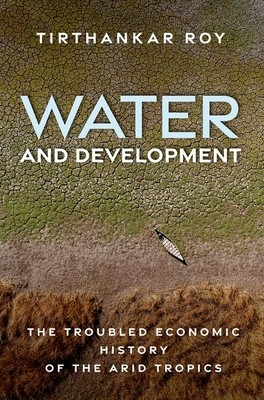
- We will send in 10–14 business days.
- Author: Tirthankar Roy
- Publisher: Oxford University Press
- ISBN-10: 0197802397
- ISBN-13: 9780197802397
- Format: 15.5 x 22.9 x 2.5 cm, hardcover
- Language: English
- SAVE -10% with code: EXTRA
Reviews
Description
From the early twentieth century, a big part of the world--the arid tropics--began extracting, storing, and recycling vast quantities of water to sustain population growth and economic development. These regions worked on water to deal with seasonality, or the rotation between extreme aridity for a part of the year and a concentrated period of rain. The idea of storing water in the wet season to use it in the dry season was not a new one in this geography. Indeed, it was an intrinsic part of ancient culture, statecraft, and technology. Most ancient projects, however, were local and small in scale. The capability of water extraction on a scale large enough to transform whole regions and create new cities improved in the early twentieth century. The process gave rise to a sharp break in the long-term population and economic growth pattern from the mid-twentieth century.
The world knows that rapid economic growth must take a toll on the environment. The tropics were no exception. However, the economic emergence of the arid tropics reinforces the message differently from how climate activists imagine. The geography of the arid tropics makes transforming landscapes to extract and recycle large quantities of water damaging to the environment and disputatious. The book is about that troubled history of economic emergence.EXTRA 10 % discount with code: EXTRA
The promotion ends in 16d.14:11:16
The discount code is valid when purchasing from 10 €. Discounts do not stack.
- Author: Tirthankar Roy
- Publisher: Oxford University Press
- ISBN-10: 0197802397
- ISBN-13: 9780197802397
- Format: 15.5 x 22.9 x 2.5 cm, hardcover
- Language: English English
From the early twentieth century, a big part of the world--the arid tropics--began extracting, storing, and recycling vast quantities of water to sustain population growth and economic development. These regions worked on water to deal with seasonality, or the rotation between extreme aridity for a part of the year and a concentrated period of rain. The idea of storing water in the wet season to use it in the dry season was not a new one in this geography. Indeed, it was an intrinsic part of ancient culture, statecraft, and technology. Most ancient projects, however, were local and small in scale. The capability of water extraction on a scale large enough to transform whole regions and create new cities improved in the early twentieth century. The process gave rise to a sharp break in the long-term population and economic growth pattern from the mid-twentieth century.
The world knows that rapid economic growth must take a toll on the environment. The tropics were no exception. However, the economic emergence of the arid tropics reinforces the message differently from how climate activists imagine. The geography of the arid tropics makes transforming landscapes to extract and recycle large quantities of water damaging to the environment and disputatious. The book is about that troubled history of economic emergence.

Reviews